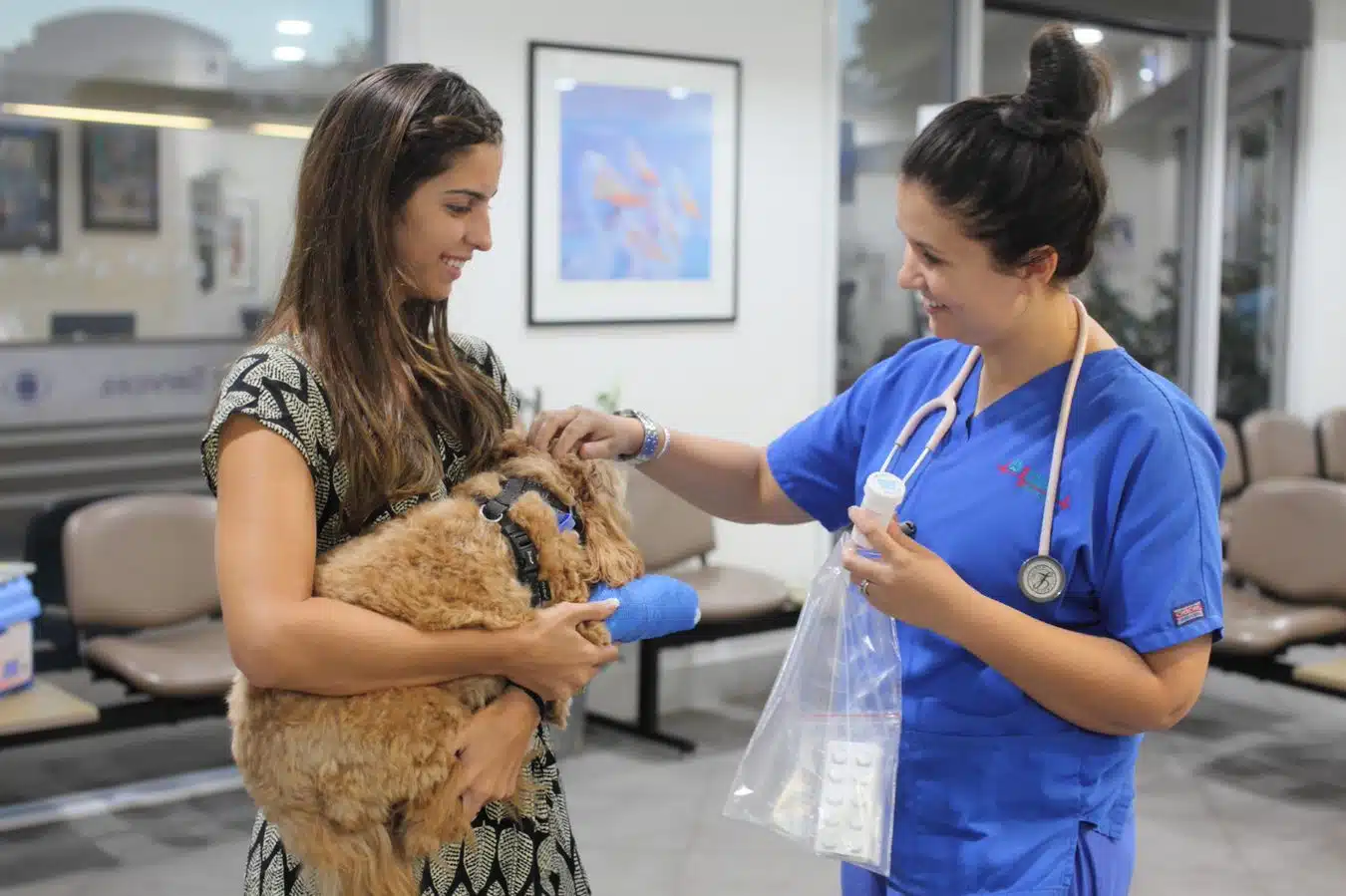Discussing veterinary bills and costs with clients is an important aspect of veterinary practice that requires sensitivity, transparency, and clear communication. And despite just how important this is, many veterinarians wish they learned more about this during vet school.
While these conversations can sometimes be challenging, they are essential for ensuring that clients understand the value of the services provided and can make informed decisions about their pet’s care. In this blog, we’ll explore some tips and strategies for approaching discussions about costs and billing with clients in a professional and empathetic manner.
Setting the Stage
Setting the stage for discussions about costs and billing with clients is crucial in establishing a positive and productive dialogue. This initial interaction sets the tone for the entire conversation and can greatly influence how the client perceives the information you are about to discuss.
Begin by greeting the client warmly and engaging genuinely building rapport. Asking about their pet’s well-being or any updates since their last visit shows genuine interest in their pet’s care and helps create a more comfortable atmosphere. This approach helps to establish a connection with the client, making them more receptive to financial discussions.
It’s also helpful to ensure that the environment is conducive to open and honest communication. Empathy can go a long way in easing their apprehension and fostering trust. Choose a private area like a consult room where you can speak freely without distractions. This helps to create a sense of privacy and confidentiality, allowing the client to feel more comfortable discussing potentially sensitive topics.

Be Transparent When Discussing Veterinary Bills
To begin, it’s important to be upfront about the costs associated with the recommended treatment or procedure. This includes not only the fees for the veterinary services but also any additional costs such as medications, diagnostic tests, or follow-up appointments. Presenting a clear and detailed breakdown of these costs through an estimate helps clients understand what to expect and reduces the likelihood of surprises later on.
Explaining the reasons behind the fees is also crucial. This can include discussing the expertise of the veterinary team, the quality of the facilities and equipment, and the level of care their pet will receive. When clients understand the value of the services being provided, they are more likely to see the costs as justified and necessary.
Education On Value
Education plays a key role in discussing veterinary bills. Take the time to explain the treatment or procedure in layman’s terms, highlighting the benefits to the pet’s health and well-being. Use visual aids such as diagrams or illustrations to help illustrate complex concepts. This not only helps clients understand the value of the recommended care but also empowers them to make informed decisions about their pet’s health.
It’s also important to discuss any potential risks or alternative options. Being transparent about the potential outcomes of treatment helps clients make decisions that are in the best interest of their pet. Similarly, offering alternative options, along with their associated costs and benefits, allows clients to choose a course of action within an appropriate spectrum of care.

Offer Multiple Options for Treatment
Providing options to clients is a valuable approach when discussing costs and billing, as it allows them to make decisions within an appropriate spectrum of care. Offering a range of treatment options demonstrates flexibility and understanding, which can help strengthen the client-veterinary relationship.
When presenting options, it’s important to explain each one clearly and thoroughly, including the benefits and potential outcomes of each choice. This helps clients understand the implications of their decisions and empowers them to choose the option that best suits their circumstances (and their pet).
In some cases, there may be alternative treatment options that are more affordable and can still be effective. By discussing these alternatives, you can help clients explore different options and make decisions that are both financially feasible and medically appropriate for their pets.
In addition to treatment options, you can also discuss payment options with clients such as VetPay. Many owners can also consider using pet insurance to help cover costs, provided they have an existing policy. By providing these options, you can help alleviate financial concerns and ensure that clients can proceed with the recommended care without undue financial burden.
Handling Objections When Discussing Veterinary Bills
Handling objections from clients regarding costs and billing requires empathy, understanding, and effective communication. In a situation where a loved one is unwell or injured, understandably many owners will be quite stressed. It’s important to listen to their concerns, validate their feelings, and work together to find a solution to their pet’s healthcare needs that is within their scope.
It’s also important to educate the client about the potential consequences of not proceeding with the recommended treatment. While cost is a valid concern, clients may not be aware of the long-term implications for their pet’s health if treatment is delayed or avoided. Providing this information can help put the cost into perspective and reinforce the importance of proceeding with the recommended care.
Throughout this process, always ensure you maintain open and honest communication with the client. Keep them informed about their options and involve them in the decision-making process. By working together collaboratively, you can help ensure that they feel empowered to make the best decision for their pet’s health.

Open Communication Throughout the Treatment Process
Open communication throughout the treatment process is essential for maintaining trust and ensuring that clients feel informed and supported. Regular updates and clear explanations help clients understand the progress of their pet’s treatment and any associated costs. Especially if the case doesn’t quite go according to the initial plan.
At the outset of the treatment process, it’s important to establish clear communication channels. Provide clients with contact information and encourage them to reach out with any questions or concerns. This helps to create a sense of accessibility and transparency, making clients feel more comfortable about the treatment process if there are changes.
Throughout the treatment process, provide regular updates to the client on their pet’s progress. These updates should include information about any changes in the treatment plan, any additional costs that may arise, and any recommendations for ongoing care. Encourage questions and provide them with honest and thorough answers.
Finally, be mindful of the client’s emotional state throughout the treatment process. Pet owners may experience a range of emotions: anxiety, worry, relief, and gratitude. By acknowledging these emotions and providing empathetic support, you can help clients feel more confident in their decisions and more satisfied with the care their pet receives.
Discussing costs and billing with clients is an important part of veterinary practice that requires empathy, transparency, and clear communication. By approaching these conversations with professionalism and sensitivity, veterinary professionals can help clients make informed decisions about their pet’s care and ensure the best possible patient outcomes. For more tips, including discussing costs with clients, explore our guide to 5 things I wish I learned during vet school!




